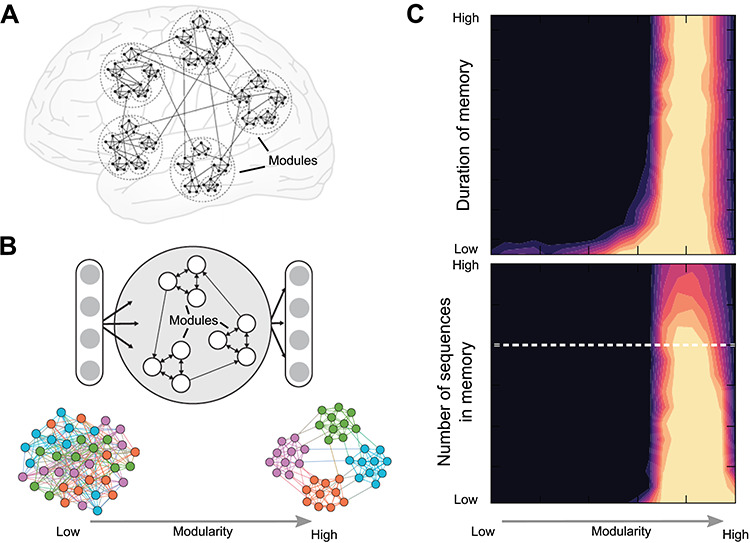Figure 2.

Modularity and working memory capacity. (A) Schematic depiction of the hierarchical modular organization of the brain’s connectome (Hilgetag and Hütt 2014). (B) Networks with high or low modularity forming the “reservoir” of an artificial neuronal “echo state” network (Rodriguez et al. 2019). (C) Functional consequences of the modular architecture of the network. The network was tested for working memory-like capacities, that is, the duration that the network could retain a sequence as well as the number of sequences that could be recalled. Note that a network configuration situated very close to high modularity exhibits the highest performance, memorizing a larger amount of sequences and retaining such memory for prolonged durations (Rodriguez et al. 2019).
